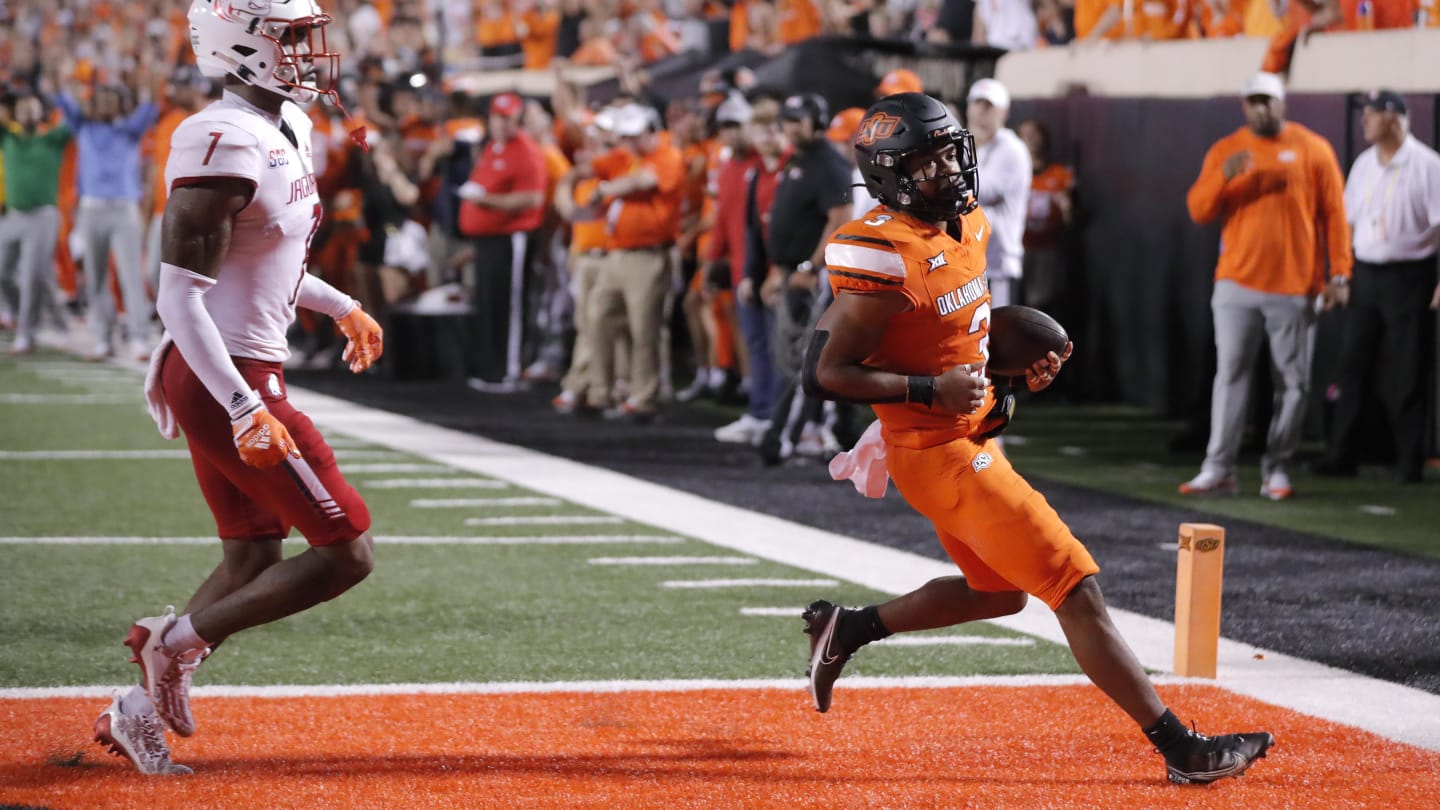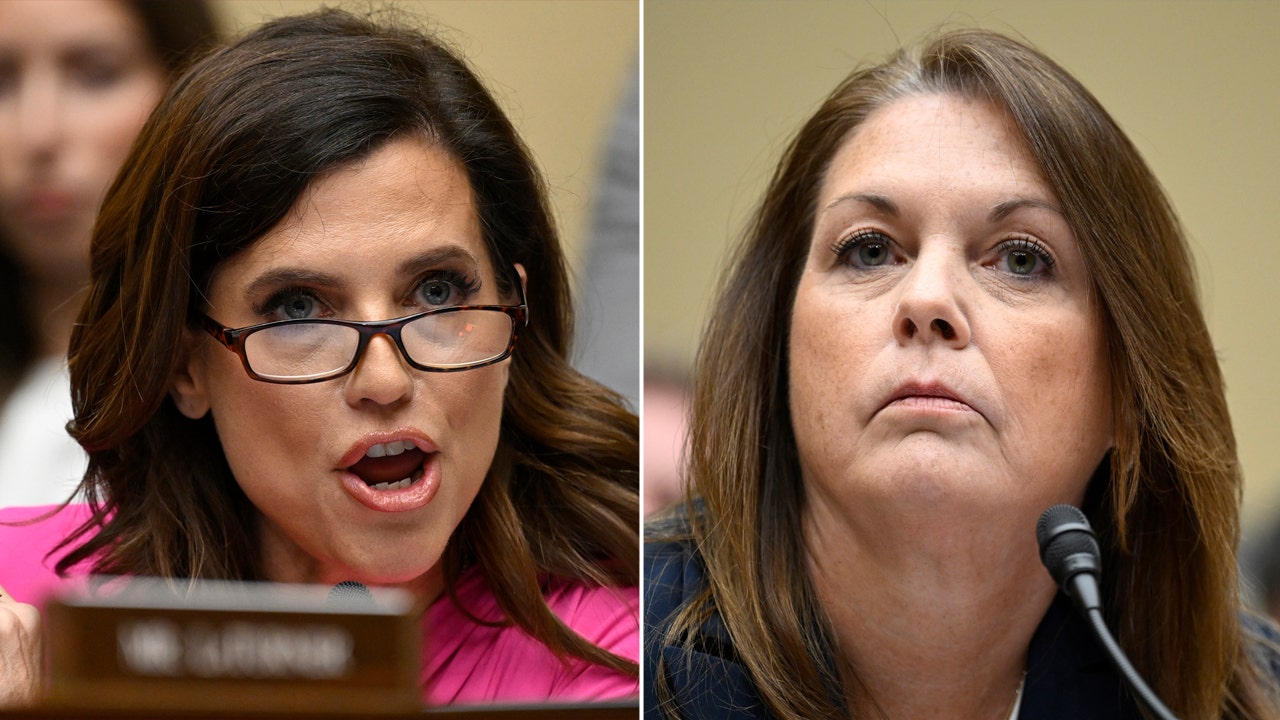North Dakota
North Dakota waterfowl hunting prospects look favorable

It’s dry out there, no doubt, but there’s plenty of reason for optimism going into North Dakota’s 2023 waterfowl opener.
The regular duck and goose season opens Sept. 23 for North Dakota residents and Sept. 30 for nonresidents.
“Things look good,” said Mark Fisher, wildlife biologist for the U.S. Fish and Wildlife Service in Devils Lake. “Waterfowl productivity this year was very good.”
Results from the
North Dakota Game and Fish Department’s July duck brood survey
, released in August, indicated brood counts were up 79% from 2022 and 88% above the 1965-2022 average index. The average brood size was 6.5 ducks, and overwater nesting species such as canvasbacks, redheads and ring-necked ducks all set records for the number of broods observed. Ruddy ducks nearly broke their previous record.
In the Devils Lake area, predator numbers were down, and it wasn’t uncommon to find large broods early, Fisher says.
“I saw plenty of broods there for a while, and then we always tend to kind of forget what the last spring brought us,” Fisher said. “We had good conditions going into the summer. There was water and quite a bit of snow. So, we started out with pretty average — maybe even slightly above average — conditions.”
The dry snap that started after May and persists didn’t seem to affect brood success, he said.
“We’ve got some areas that are pretty dry, north of Highway 2 in particular,” Fisher said. “They haven’t had a lot of rain this summer. These small storms we’ve had here recently haven’t really changed much, but there’s still some habitat out there, still plenty of opportunities.”
Devils Lake, of course, “is in good shape as far as water levels go,” Fisher said, and can provide good waterfowl hunting opportunities, at times. Hunters who can find and access wetlands with water also should do well.
“If you can find water, birds might tend to be a little more concentrated if you’re hunting over water when you have some drier conditions,” Fisher said. “It’s definitely not a ‘drought’ drought, but it’s drier than what I would say is normal.”
Traditionally, Fisher says, waterfowl hunters early in the season encounter the highest diversity as far as duck species. That means puddle ducks such as mallards, pintails, gadwall, teal and shovelers.
Hunters who prefer hunting over water on Devils Lake itself for diver ducks such as scaup might have to wait until later in the season before action really picks up, he says.
“You may not see those birds right out of the gate — it might be a little bit slower,” Fisher said. “And then I think as the fall progresses and you get into mid-October, you start to lose blue-winged teal and probably some pintails, they tend to get out of here. But you still have quite a bit of green-winged teal at that time — green-winged teal and mallards — they’ll stick around.”
By mid-October, scaup usually start “pouring in” to the big water of Devils Lake.
“And then at the end, you’ll end up with mallards and scaup,” Fisher said. “Those will be your last birds that are pretty hardy, and they won’t leave until they absolutely have to and snow covers the ground.”
Contributed / Susan Felege, UND
Anecdotally, it seems goose hunting has been “pretty slow” for hunters who have gone afield for North Dakota’s early Canada goose season, Fisher says.
The “August Management Take” and early September season closed Sept. 7 in the Missouri River Zone, Friday in the Western Zone and continues through Sept. 22 in the Eastern Zone, which includes the majority of the state.
“A lot of folks that I’ve talked to — even folks that complain about goose depredation — have been wondering, ‘Hey, where are the geese?’ ” Fisher said. “They’re just not seeing the numbers of geese.”
It’s only speculation, but Fisher says a couple of dry years might have reduced populations, at least in the Lake Region.
“Whenever there’s consecutive wet years, they tend to do really well, but we had those couple of dry years,” he said. “It seems like the goose numbers — or at least the localized goose numbers — are not real abundant.
“You can find them, but you’ve really got to look for them. Whereas, five years ago, they were everywhere.”
Continental breeding duck populations this year were down 7% from last year, the U.S. Fish and Wildlife Service said in August in releasing results from the
annual spring North American waterfowl survey
conducted in May and early June by the U.S. Fish and Wildlife Service, Canadian Wildlife Service and other partners.
Total populations were estimated at 32.3 million breeding ducks in the traditional survey area, down from the 2022 estimate of 34.7 million and 9% below the long-term average since 1955, the Service reported.
While some waterfowl experts were discouraged by the continental population decline, others put the findings in a different light.
“We don’t hunt the breeding population,” Frank Rohwer, president and chief scientist of Bismarck-based Delta Waterfowl said in a news release reporting the North American survey results. “We hunt the fall flight, which is made of the breeding population plus this year’s duck production. Duck production is the key to the upcoming hunting season.”
In North Dakota, the breeding duck index, at 3.4 million birds, was up 1.5% from 2022 and 39% above the long-term average since 1948. The fall flight of ducks from North Dakota is expected to be similar to 1998, 2004 and 2020, the Game and Fish Department reported in late August.
In the Devils Lake area, at least, Fisher credits Delta Waterfowl’s predator management program for helping to maintain strong duck production. In areas where predators are managed, nest success is higher, he says; extensive study in the early years of predator management work has borne that out.
“Whenever you do it, and wherever you’re doing it, you have a higher level of success in that localized area,” Fisher said. “There’s no reason to keep looking at that question because it’s been answered, I think, pretty completely.”
As opening day approaches, small grain crops have been harvested, leaving only corn and soybeans in the fields. Some farmers have already plowed their stubble fields, Fisher says, but if current conditions hold, getting around on backroads and prairie trails shouldn’t be a problem.
“I think it’s going to be a good season,” he said.
North Dakota’s duck season continues through Dec. 3 statewide, followed by a late season beginning Saturday, Dec. 9, and continuing through Sunday, Dec. 31, in the High Plains Unit of western North Dakota.
The daily bag limit on ducks (including mergansers) is six, with species and sex restrictions as follows: five mallards of which only two may be hens, three wood ducks, two redheads, two canvasbacks, one scaup and one pintail.
For information on goose bag limits, season dates and hunting hours, check out the Game and Fish website at
gf.nd.gov
.

North Dakota
Pressures could lead to more closures at ND nursing homes

BISMARCK — Federal requirements for nursing homes to have a registered nurse on duty 24 hours each day are expected to add pressure to an already challenging workforce situation for the 75 rural and urban facilities across the state.
A majority will have a hard time meeting the 24/7 requirement for RNs, according to the North Dakota Long Term Care Association.
Nikki Wegner, director of the NDLTCA, said most facilities across the state are currently well-staffed except for that RN requirement.
Cost pressures have already led to six facilities closing in the past 35 months, she said.
“We’ve never had that before in our history, and the majority of them were because of staffing issues,” Wegner said.
Urban facilities have until May 2026 to comply with the federal requirements, while those in rural areas have until May 2027.
Rules have also changed, with areas like Dickinson, Devils Lake, Jamestown, Valley City and Williston no longer considered rural, meaning they’ll need to meet requirements sooner.
“I worry about how many facilities might have to close because they can’t meet the standards,” said Reier Thompson, president and CEO of Missouri Slope in Bismarck, which has long-term care for over 250 residents.
“What’s that going to do to access to care, especially in the more rural area, where people are traveling 100 miles from their hometown to a nursing facility, and maybe a spouse is commuting that a couple times a week?” he said. “It’s going to be hard, especially in winter.”
Throughout the COVID-19 pandemic, staffing full-time nurses and nursing assistants at long-term care facilities became a huge challenge. Many turned to short-term contract nurses, and costs soared.
The situation has begun to turn around for Jill Foertsch, administrator at St. Gerard’s Community of Care in Hankinson. St. Gerard’s has added new certified nursing assistants while reducing the use of contract nurses from eight just a short time ago to two.
“We have improved significantly,” Foertsch said.
That being said, finding enough RNs to meet the new requirement is going to be tough.
“We are not able to meet the 24/7 staffing mandate,” she said.
The situation may mirror what happened during the pandemic, but contract RNs are in short supply and high priced, she said.
The one caveat is this time there’s no funding on the horizon.
“We will not be getting any help from the government like we did during COVID, and that’ll be what would most likely help us to shut down, because it’s just not sustainable that way,” Foertsch said.
The NDLTCA estimates contract nurses accounted for around $73 million of statewide nursing costs in 2023, up from around $24 million in 2020.
Staffing at nursing homes in the state is also now around 1,200 workers below what it was in early 2020 numbers, according to the NDLTCA.
The NDLTCA estimated that only 35% of urban facilities and only 14% of rural facilities would currently meet the future 24/7 RN staffing requirement.
Right now, most facilities rely on a mix of RNs, physician’s assistants, nurse practitioners or physicians through phone or telehealth if an RN isn’t on duty beyond the normal daytime shift. Finding RNs to fill overnight and other shifts is going to be difficult.
No funding is earmarked for those shortfalls, the numbers of RNs are just not available, and no pipeline is in the works to increase the availability of RNs.
“We’re still in a workforce crisis, we still rely on a lot of contract nurses, and it’s expensive, and then you add the mandate on there to increase even more,” Wegner said, adding that the state needs at least 80 if not more RNs to fulfill the mandates.
Several states have already met stringent requirements for waivers from the rule, but Wegner isn’t hopeful North Dakota will qualify.
Blake Kragnes, administrator at the 85-bed Knife River Care Center in Beulah, said his nursing home has been able to keep staffing at a good level, but the mandate of the 24/7 requirement for RNs is going to be tough to meet.
“When you look at the number of college grads graduating with a nursing and RN degree, it’s down, and that makes it complicated to meet a mandate that comes with no funding,” he said.
Kragnes is looking at how to increase recruitment and retention by connecting with area high schools to start people in a health care career that may lead them to full-time registered nursing status.
Foreign nurse visa freeze
One avenue most facilities are trying to use is immigration, but the U.S. State Department recently froze EB-3 visas used by foreign nurses for the rest of the fiscal year, leaving around 10,000 foreign nurses in limbo until resolved.
A cap of 40,000 visas for foreign nurses has been in place since 1990, and legislation to increase the cap stalled in the U.S. Congress after its introduction in November 2023.
According to the Migration Policy Institute, international nurses account for around 16% of the nursing workforce in the country.
National health care nonprofit KFF, formerly known as The Kaiser Family Foundation, estimates that 1 in 6 of the 3.2 million RNs in the U.S. is an immigrant nurse.
Amy Kreidt, administrator of St. Luke’s Home in Dickinson, which operates an 88-bed long-term care facility, echoed Foertch’s comments by saying the mandate coupled with the high cost of contract nursing could put more rural nursing homes out of business.
“Right now we’re not (in danger of closing), but if we can’t start getting nurses here, we have to keep that as an option and review,” she said.
St. Luke’s has had success with its foreign nurses, but the visa freezes and annual caps, along with the complicated immigration process, have led to it taking up to four years to get foreign nurses, Kreidt said.
“And that’s if it goes through relatively quickly, and it seems to always have taken that long, but now, with additional delays, it will continue to take that long and longer,” she said. “The contact is only three years long and it takes over four years to get them, so the numbers don’t add up.”
LeAnn Hokanson, vice president of resident services at Missouri Slope, said besides funding to cover nursing costs, there is a major need for both immigration and on expanding nursing programs.
“The (foreign nurses) that we’ve been interviewing most recently, they’ve been waiting and waiting and waiting,” she said. “Some of them wait for 10 years to get their call to have a facility interview them. It’s all stuck in that visa process.”
Contributed / Missouri Slope
Kreidt has previously tapped into the nursing program at Dickinson State University, but with its entire full-time nursing faculty resigning on July 10, the future of that program is uncertain.
The situation also adds further uncertainty regarding the nursing pipeline for health care facilities across the state and region.
North Dakota’s new Office of Legal Immigration is looking to pilot a cap-exempt H-1B visa program in the next several months specifically for foreign nurses, according to a study it released in late May.
This could help increase the numbers of RNs and nurse practitioners, though hurdles exist since the H-1B immigration process is more costly and facilities need to meet eligibility requirements.
This story was originally published on NewsCoopND.org
______________________________________________________
This story was written by one of our partner news agencies. Forum Communications Company uses content from agencies such as Reuters, Kaiser Health News, Tribune News Service and others to provide a wider range of news to our readers. Learn more about the news services FCC uses here.
North Dakota
South Dakota Democratic delegates unanimously endorse Harris as presidential pick • South Dakota Searchlight

The South Dakota delegates to the Democratic National Convention met virtually Monday night and voted unanimously to endorse Vice President Kamala Harris as their nominee in the 2024 presidential race.
South Dakota Democrats hopeful, not yet ready to endorse Harris as presidential nominee
In voting to endorse Harris, South Dakota Democrats fell in line with other state and national Democratic leaders who quickly followed the lead from President Joe Biden, who dropped out of the 2024 race via social media Sunday afternoon and endorsed Harris as his successor shortly thereafter.
Democrats in Nebraska, Maryland, Florida, New Hampshire, Alabama, North Carolina and Virginia were among the states where Democrats backed Harris as of Monday evening.
Harris has also picked up endorsements from key leaders at the national level. California Gov. Gavin Newsom, mentioned as a possible Democratic contender himself, endorsed Harris quickly on Sunday. Former House Speaker Nancy Pelosi endorsed Harris Monday. Senate Majority Leader Chuck Schumer and House Minority Leader Hakeem Jeffries had not endorsed Harris as of Monday evening, but Jeffries said earlier in the day that Harris had “excited the House Democratic Caucus and she’s exciting the country.”
Late Monday evening, the New York Times, CNN and other national media organizations reported that Harris had secured the backing of more than the 1,976 delegates needed to win the nomination in the first round of voting at the Democratic National Convention in Chicago next month. The news came by way of a poll from The Associated Press, which broke the story.
The poll listed 2,668 delegates pledged to Harris and 54 undecided as of 10 p.m. CST Monday.
The Democratic National Committee will move forward with the process to formally nominate a presidential candidate Wednesday when its Rules Committee meets in a public virtual session amid ongoing efforts to set up a virtual roll call vote ahead of the convention next month in Chicago, according to reporting from States Newsroom.
South Dakota Democrats backed Biden with around 75% of the vote in the state’s June 4 primary. In a news release, the South Dakota Democratic Party announced that its 20 voting delegates to the August convention had voted unanimously to back Harris.
“We thank President Biden for his leadership throughout his career and for choosing Kamala Harris four years ago to be his Vice President,” said Delegate Chair Jessica Meyers. “Harris has proven that she is more than equipped to take on the Presidency and we as a delegation are looking forward to casting the official vote for her.”
GET THE MORNING HEADLINES DELIVERED TO YOUR INBOX
North Dakota
Tuesday is Military Appreciation Day at the ND State Fair

MINOT, N.D. (KMOT) – This is a reminder for servicemembers and their families that the North Dakota State Fair is continuing its long-standing tradition of honoring those who serve with a special Military Appreciation Day on Tuesday.
Military members and their families can enjoy lunch from 11 a.m. until 1 p.m. at the north festival tent.
The event is sponsored by the N.D. Beef Commission, N.D. Stockmen’s Association, and N.D. CattleWomen.
They can also enjoy free carnival rides from 1 p.m. to 3 p.m., half-off unlimited ride wristbands, and $2 off go-cart rides.
Copyright 2024 KFYR. All rights reserved.
-

 Politics1 week ago
Politics1 week agoTwo key states to see massive GOP voter registration operation
-

 News1 week ago
News1 week agoWhy the next president's judicial appointments will impact climate action
-

 News6 days ago
News6 days agoIn Milwaukee, Black Voters Struggle to Find a Home With Either Party
-

 News4 days ago
News4 days agoVideo: Young Republicans on Why Their Party Isn’t Reaching Gen Z (And What They Can Do About It)
-

 News1 week ago
News1 week agoShooting at a Trump Rally in Pennsylvania: Maps and Photos
-

 News1 week ago
News1 week agoVideo: Biden Asks America to ‘Lower the Temperature’
-

 World1 week ago
World1 week agoUkraine: shelling in Kherson leaves at least two people dead
-

 World3 days ago
World3 days agoFreshers' week in Strasbourg for new EU lawmakers


:quality(70)/cloudfront-us-east-1.images.arcpublishing.com/advancelocal/C327DWZXTBEWFMMCZC5V4HS3SQ.jpg)











